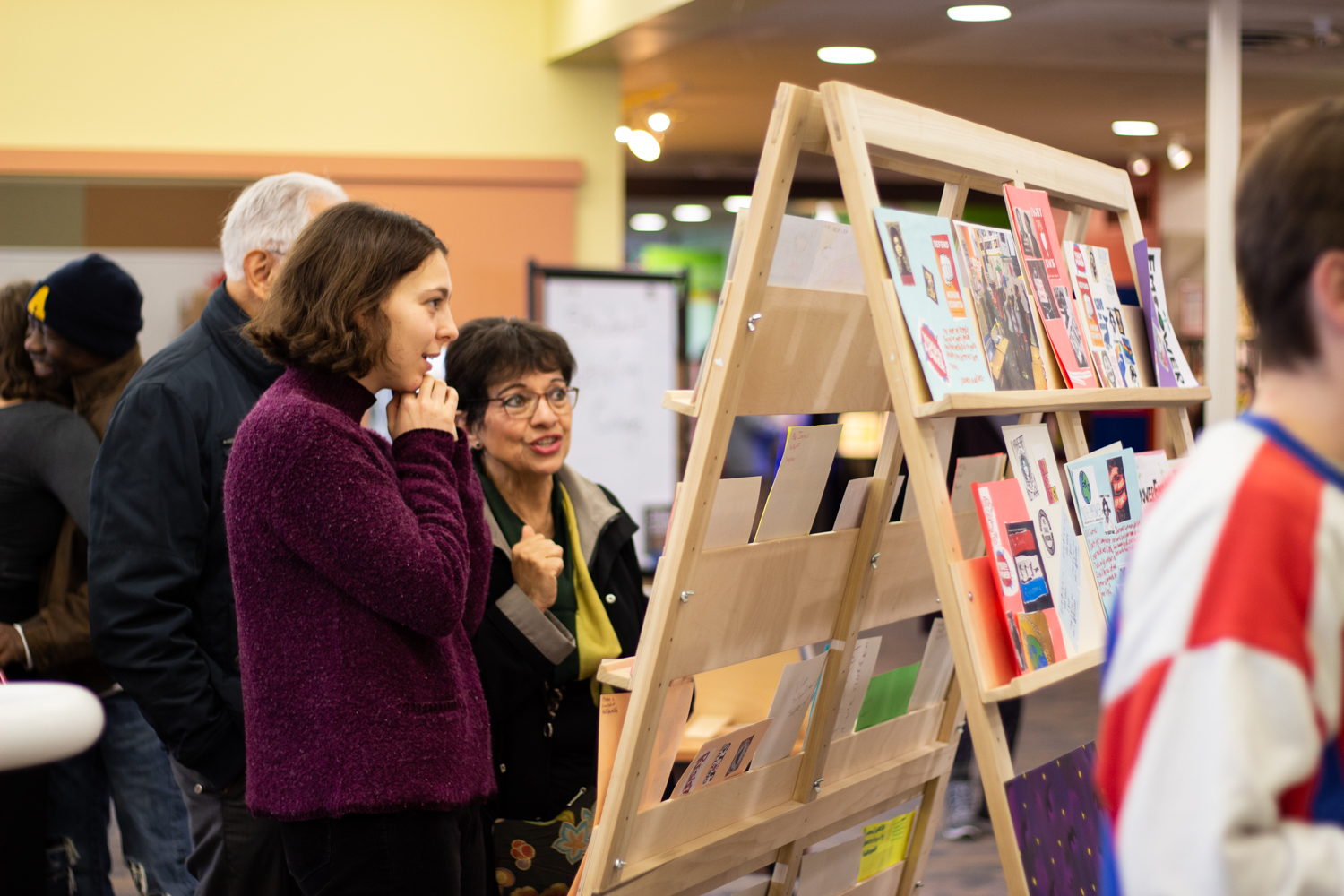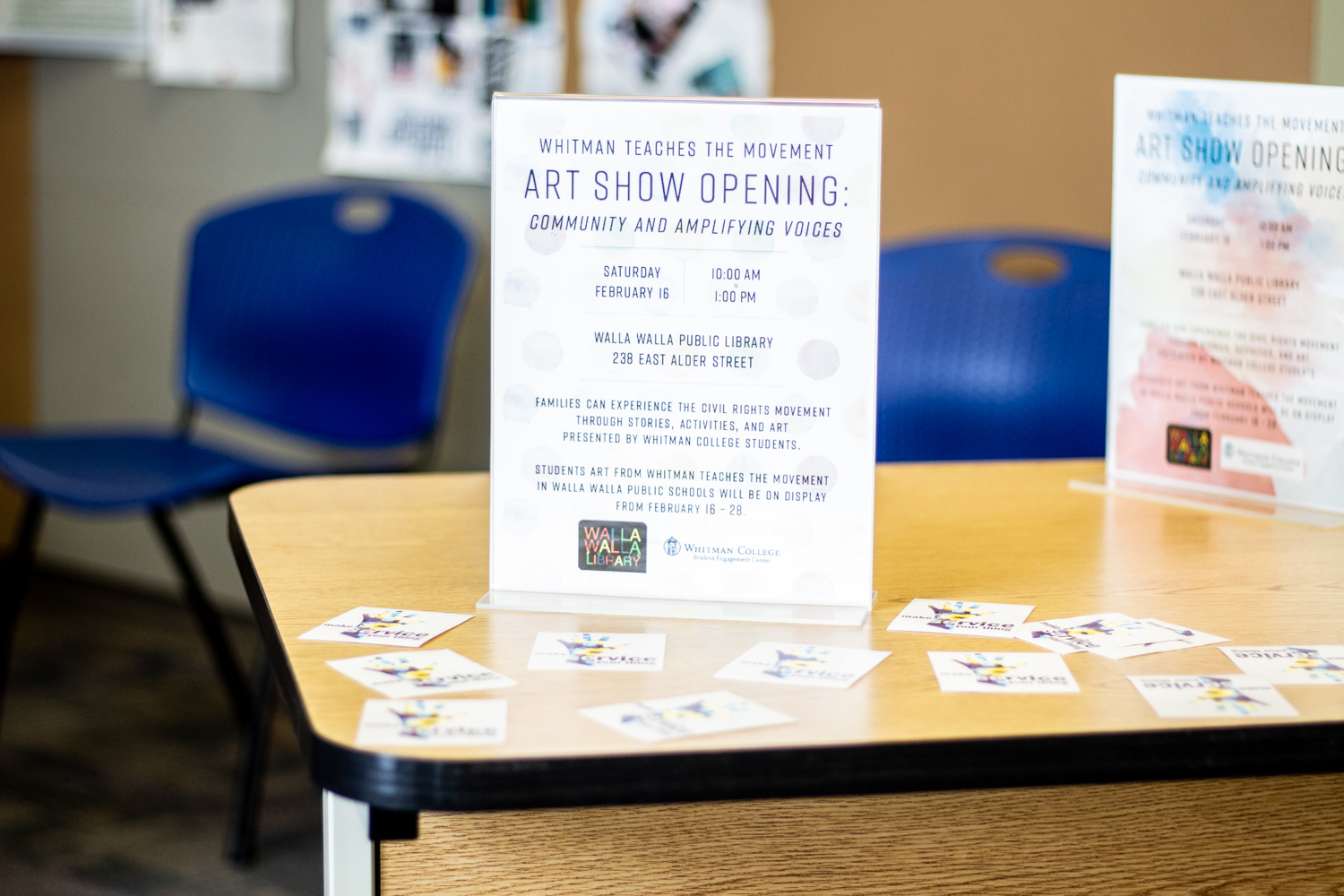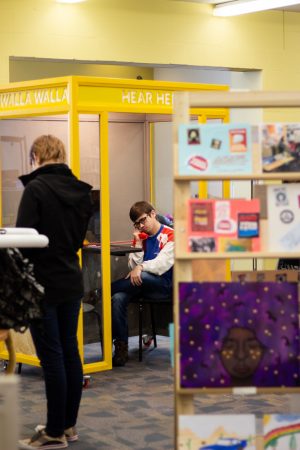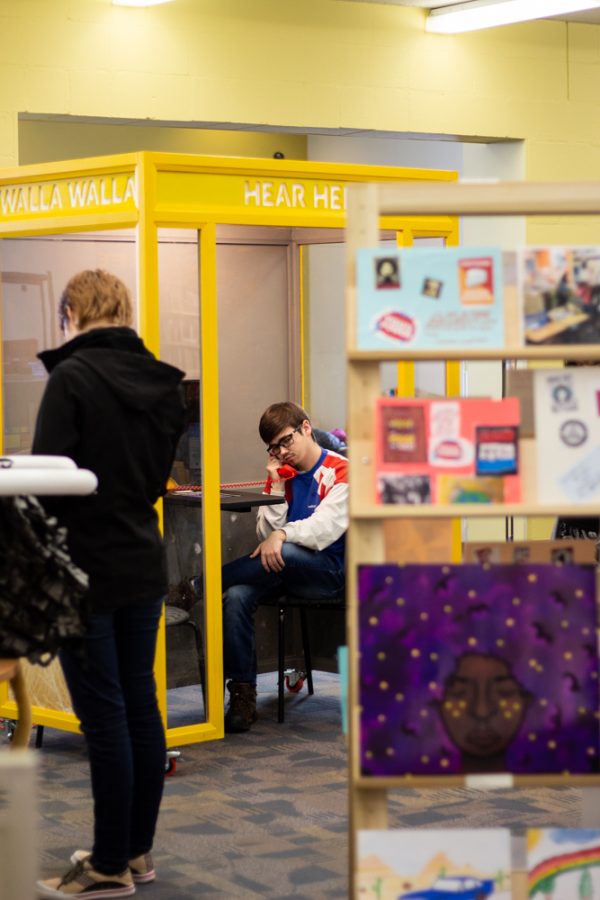Whitman Teaches the Movement Art Show Opening at Walla Walla Public Library
February 23, 2019
On Saturday, Feb. 16 Whitman Teaches the Movement opened the Walla Walla Public Library to host an art show. The show was open to everyone, in particular to the children of the local community. Several Whitman students volunteered to help organize the space and share their artistic talents.

Photo of the print exhibit.
Whitman Teaches the Movement (WTTM) is a project that aims at teaching Walla Walla public schools’ students about social justice and tolerance. The project was started in 2011 by Whitman College in collaboration with the Southern Poverty Law Center and local Public Schools to increase levels of awareness and popularize social justice among school students.
Maddy Gold ’19 is an active member of the movement. She was one of the organizers of the show in the library.
“I find it really important to create dialogue. It was important for me to organize it because art can be very healing and also, art can spark social change. On a lot of these protest signs it says, “Art changes everything,” said Gold.

The art exhibition includes works from Whitman students and locals alike. The main themes are social justice and the importance of sharing people’s experiences rather than silencing their narratives.
“Here in Walla Walla, people are divided and Whitman students often consider themselves a separate entity. Yes, we are an institution but at the same time, there’s not enough interaction going between schools, between the people of Walla Walla. If you’re a student, to have your art up and have people viewing it, is a way to amplify your voice,” said Gold.
One of the most remarkable exhibits is a model of a telephone booth where visitors can listen to the voices of some Walla Walla residents who talk about issues such as immigration and inequality. The creators divided those monologues into several categories, such as “Invisibility” or “Sunrise” for the convenience of the listener.
“The booth called “Hear Here Walla Walla” was created as part of the Devise Theatre and Socially Engaged Art project which was a part of a theatre course last semester. We interviewed people in Walla Walla about questions surrounding immigration. For example, the “Sunrise” section focuses on who is awake during the sunrise and who is not”, said Erina Horikawa ‘19, one of the volunteers at the event.

The telephone booth audio installation.
“We interviewed community members mainly through the Walla Walla Immigrants’ Rights Coalition. I feel like listening to people different from us, especially now, is really difficult, so I think it’s a tangible way for a lot of people in Walla Walla, who might not always think how immigration affects them, to hear people’s experiences and their honesty. For those who are impacted by immigration – it can be empowering,” said Horikawa.
One of the highlights of the show was a musical collaboration between Dorothy Mukasa ’19 with vocals and Cory Cogley ’19 on guitar, performing “Dear Freedom” written by Mukasa herself and “Stand by Me” by Ben E. King. The original song contains several references to Martin Luther King Jr. and John Lewis and celebrates their legacy and efforts towards racial equality and social justice.
“I wanted to do justice to those individuals who have participated in the Civil Rights movement, whether that’s leaders but also ordinary people. I think the key thing about the Civil Rights movement is that we have these figureheads who are really powerful – Martin Luther King Jr., John Lewis, Malcolm X – yet they are not the only ones who make up the movement. There are a lot of individual ordinary people who did a lot of work in order to popularize the movement. Writing this song, I was wondering would those people see today’s reality as freedom or would they see it as something else”, said Mukasa about her song’s meaning and message.
The WTTM exhibition is open on display from Feb. 16-28. Visitors have a chance to appreciate artworks of students and community members as well as learn more about the Civil Rights movement and other examples of individuals and groups who are involved in changing our society.





